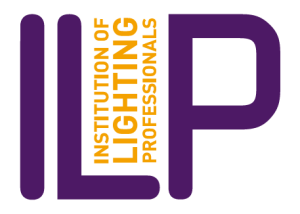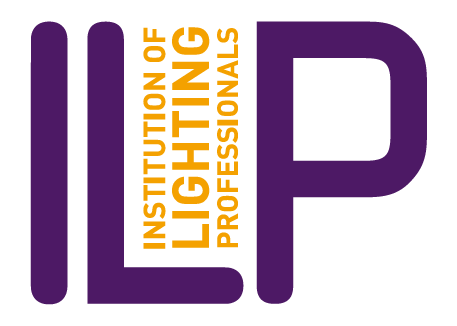A keynote speaker at the London and South East Region’s ‘Serendipity in Lighting’ event, Brian McGuigan outlined how column-based sensor technologies are transforming our cities, and this is just the start of the journey. This is an abridged version of his presentation
Smart lighting, increasingly, is providing the foundation for much wider, more profound smart city innovation.
This is, of course, not a new concept – I appreciate many ILP members have been at the cutting-edge of smart lighting for the past decade.
But what we are seeing now, over the last couple of years, is that smart city innovation has been accelerating and becoming much more of a reality. There are now many exciting projects happening around the world that are now delivering real value for municipalities.
CHALLENGES AND BARRIERS
So, first, what are the challenges or barriers cities are facing in this context? And how are they going about addressing those?
There is a complex mix of challenges, and these are growing and diverse. There is the issue of managing and mitigating extreme weather events. Then there is the need to achieve long-term energy security. There is the imperative to be planning for and addressing cyber security challenges. And, at the same time, municipalities are having to cater for evolving citizen expectations.
On this last point, there are rising expectations around the services cities are expected to provide – as standard. There is the desire for increased quality of life, and cities are of course having to compete with other cities for investment, to attract and keep talent and grow their economies. So it is, as I say, a very diverse set of challenges, some of which actually conflict with each other.
It is obvious to most people that technology can play an important role in tackling these. However as a technology provider, we’ve set out to understand exactly the right place for technology to fit, how to fit into this landscape, and how it can provide the most value for cities and their citizens.
With this in mind, we’ve partnered with the ThoughtLab research group for the past 2 years, to conduct a series of major global studies which dig into and explore these issues, and seek to understand what is driving these barriers and challenges. Such as its study ‘From future vision to urban reality’.
This included interviews with leaders from 250 cities across the globe, representing about 9% of the world’s population. Importantly, for us, it has looked not just at major cities but smaller towns too, as well as a UK perspective. The study also engaged with citizens to get their perspectives.
Of the top 15 challenges, climate change and pollution was up there as the number one both for cities and their citizens – whether that be droughts, flooding, heat, or extreme weather events.
Public health, including mental health and addiction, was the second rated by cities, while citizens prioritised the need for more affordable housing and homelessness, which was rated third by municipalities. Citizens then rated income equality and social inclusion as their third-highest priority.
The study also highlighted a conflict between shrinking budgets, increasing pressures and this need to grow economies locally and invest – the need, essentially, to be smarter in how money is spent.
Finally, there is also a strong security theme that comes out from the research, whether it be improving road safety, health and safety, and helping to prevent crime.
When it comes to the key obstacles identified which are blocking progress on these, it is clear that cities know they cannot do this alone; they need partners to do it, and they need different partners to solve different parts of the puzzle. That is, for us, a key requirement.
Another set of obstacles come from internal friction – political pressures, lack of collaboration across silos, budgetary pressures and allocations. These can be structural barriers that prevent this agenda moving forward.
Finally, over the last decades it is clear that the role of innovation in technology is transforming this landscape. The accelerating speed of technological innovation is forcing cities to think about how they procure solutions and how they form partnerships, and how these partnerships and relationships can, in turn, keep pace with this fast-changing landscape.
Within this, municipalities also need to be thinking about the internal skills that they have (or are lacking in), which is a further challenge.
SPEED OF INNOVATION
Building on our learnings from this research, last year Itron launched ‘CityEdge’. This is an innovation platform designed for cities, which brings together diverse IOT technologies within a framework that fosters collaboration. It is designed to enable cities to begin to quickly explore these challenges, to pilot and test new technologies so they can understand what works best for them, collaborate with the right partners, and then scale them up.
There are three core elements within CityEdge. Firstly we work with customers to enable IoT-focused connectivity across cities.
This could involve deploying new mesh networks as we have done here in London, and also integrating these with publicly available networks so cities can choose the right connectivity option for each use case. There is, we realise, no silver bullet for connectivity; every use case will be different and will require a different approach.
The second element is a device and data management platform, that brings the data from all these devices and controllers together, so municipalities can better see what is happening across their city at a glance, generate alerts and reporting and combine data across verticals to build new intelligent use cases.
The final part is our ecosystem of proven use cases from leading global providers. While all cities have unique requirements, many also recognise the importance of benefiting, and learning, from what has been done elsewhere in the past. This allows cities potentially to move much faster to meeting these challenges.
Within this global picture, we continue to see smart street lighting playing an increasingly important role in all of this. Street lighting is becoming a key enabler for cities to start moving forward on this journey. Why, you may ask?
First of all, street lighting tracks where businesses and people are within a city. It has the coverage and the scale to leave it well-placed to add other services that are being delivered.
Second, and very importantly, street lighting has a proven business case. Many smart city use cases are still trying to work out how to balance the economic benefits against the cost against the quality of life or safety improvements. But the business case for LED and smart street lighting that underpins all this, as I’m sure all ILP members will be well aware, has been well-articulated for some time now.
Third, the core building blocks we need for a smart street lighting system – a communication network optimised for IoT and a capable SW platform – are actually very similar to the building blocks you need for other smart city applications, such as air quality monitoring, flood alert systems, noise tracking and many more.
Furthermore, the capability of lighting systems is only increasing over time. We’re rapidly now moving beyond basic CMS; and the role of lighting is changing in many cities. It is increasingly integrating with wider systems, such as emergency services or tracking real-time sensor data. As the capability of smart lighting systems is increasing it makes these building blocks even more well-suited to cater for the wider smart city use case.
REAL-WORLD EXAMPLES
Let me now move to some real-world examples of cities that are doing this today. We’ve worked closely with the city of Paris – the city of light after all. Interestingly, as a city, the authorities have been relatively slow to move to LED. They’ve been concerned, understandably, over changing the colour or character of the city because it is so engrained; they have as a result been quite tentative in embracing these new technologies.
Nevertheless, the Parisian authorities have committed to reducing public lighting energy consumption by 30% over the next 10 years, while also ensuring there remains quality lighting for citizens.
They don’t have individual lighting control; they have 180,000 lights in the city controlled through 20,000 control boxes. An interesting requirement they had, was that they wanted lights to turn on and turn off in a smooth sweep from east to west, rather than a ‘popcorn effect’ where lights were turning on almost at random on timers that were not synchronised.
This was to improve the aesthetic appeal on the long boulevards of Paris. Via an IoT network canopy, we therefore enabled a system with 12 photocells around the city, in key arrondissements.
When the photocells determine the switching-on time, we send 20,000 commands to each cabinet and the 180,000 lights turn on across a three-minute window, so creating that ‘sweep’ effect.
The wireless connectivity requirements that all cities need are, of course, all different. But what we also found in Paris is there can be very different approaches and priorities within the city itself. In the north, each cabinet controls maybe two to five lights via small devices on poles. This is much closer to an individual control system. Whereas in the south of the city, the cabinets control 30, 40, 50 lights; so it is much more spread out, much more sparse.
But ultimately the benefit of these self-forming mesh networks is that they can cater for these differences, whether we are talking about a rural or urban deployment.
My second example is Copenhagen. Here there is individual control and the municipality’s priority was very much energy-saving, to achieve its carbon-neutral targets.
They have specific focus on improving cycle safety; the city has some of the most cycle journeys of any city in Europe. They wanted a smart lighting solution with 20,000 new LEDs and 1,100 lighting cabinets. They also wanted traffic signal controllers to notify on the status of the light, and radars to detect cyclists. So that when cyclists are setting off from a junction the lights can be increased to ensure they are more visible.
My final example is Fuengirola in southern Spain. Here, a city-wide Wi- SUN network was installed, alongside a smart city data platform. The city’s mayor is very ambitious about the foundational role of technology in moving the city forward, both in terms of growing tourism – the primary industry – but also for other sectors.
The first priority was to tackle rising energy costs. They’ve switched, naturally, to LED and a smart lighting system. The financial benefits from that have actually been able to fund the entire programme. Everything else has been funded by the savings accrued from the smart street lighting. That is, I feel, a really powerful business case.
The next priority was to improve the city experience for tourists. That has led to the installation of noise sensors in and around key touristic locations, in a number of city squares. These control the street lighting based on noise levels, and help to identify any anti-social behaviour that may be disturbing residents and tourists alike.
During Covid, very strict rules came into place about the use of the beach; they had to control over-crowding very strictly. So cameras were installed to monitor the beach for crowd levels. Post-Covid, they have kept the system in and are now using that data to inform city services, for example how busy parts of the beach are at different times of day and in different seasons, for example. That can inform things like waste collection and bus routing.
A further challenge they wanted to look at was road safety. Radar sensors and AI tracker cameras were deployed to measure traffic flow and then use that for a real-time adaptive lighting system. That is now being extended to tackle issues such as crime prevention, loitering and so on. It is an interesting illustration of how this technology can grow in functionality over time.
They also had 1,100 pedestrian crosswalks – and had no lighting at all at these. That is an area where, understandably, the city’s authorities are concerned about pedestrian safety after-dark. So, they are putting in, again, a system of motion sensors and streetlights that will turn on when they detect users crossing the road.
RESPONSE TO CHANGING CONDITIONS
One of the great things about these mesh networks is they are self-organising and can constantly adjust or change to changing conditions, perhaps heavy rain or snow, or seasonal changes like leaf-fall.
Or a long-term change if, perhaps, some new infrastructure – a stadium for example – is built in that part of the city. Streetlights, too, are of course well-suited to creating this kind of mesh network and the sort of the coverage that you get as a result.
In conclusion, every city has its own priorities, some potentially very localised and even obscure.
That ability of street lighting, and in particular streetlight-based sensor technologies, to bring solutions to bear to even the most diverse challenges is a massive selling point for our industry. Ultimately, it is making streetlighting one of the most critical infrastructure assets of our future cities.
Brian McGuigan is director of smart cities, EMEA, at Itron
This is an abridged version of the article that appears in the November-December edition of Lighting Journal. To read the full article, simply click on the page-turner to your right.
Image: Paris at night at Christmas. Municipal authorities in the city are working to embed smart lighting in key arrondissements. Shutterstock



